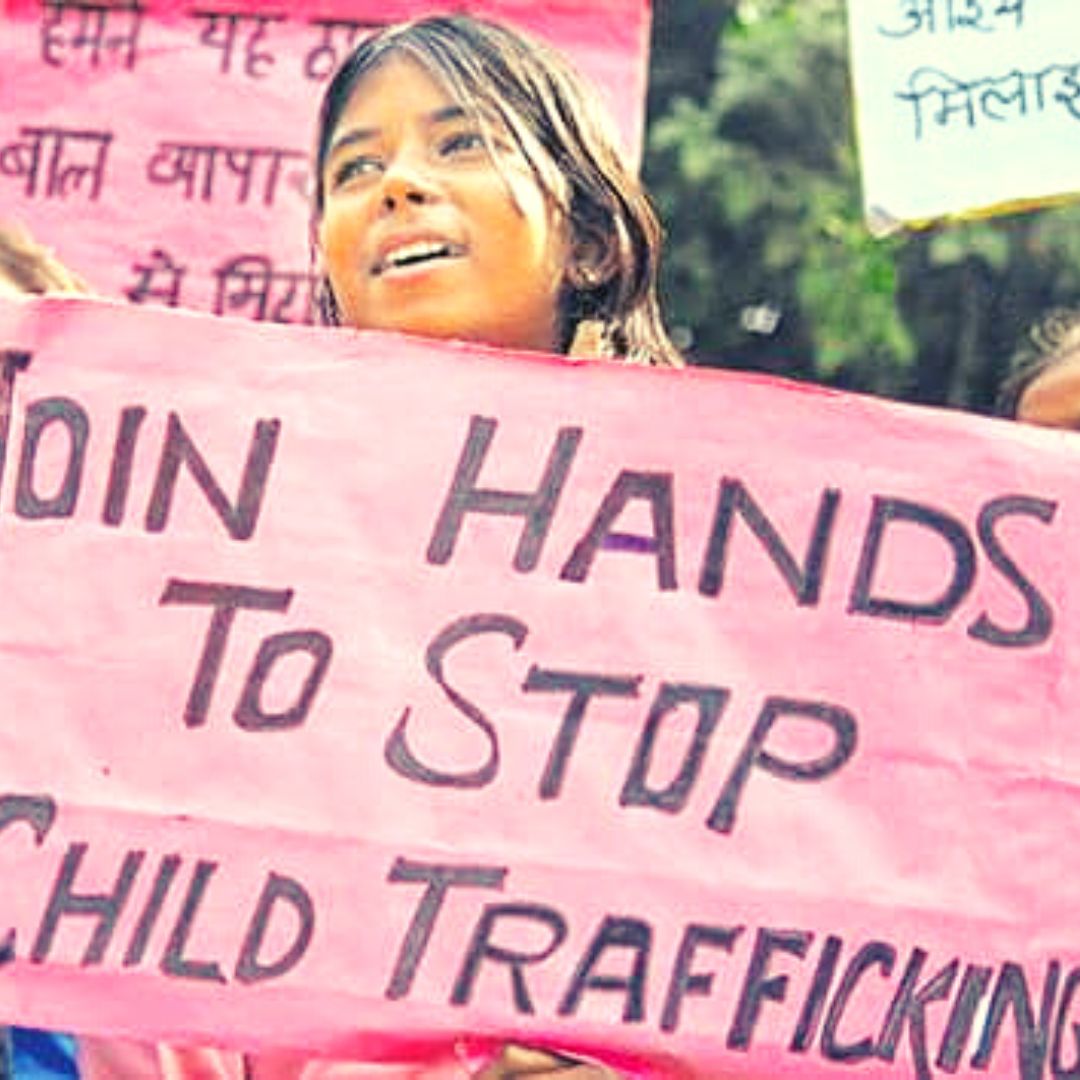
Image Credits: Hindustan Times
World Day Against Trafficking: 8000 Children Trafficked In Last 3 Yrs In India, What Is The Current Situation?
Writer: Tashafi Nazir
For most people, journalism sounds hectic and chaotic. For her, it's a passion she has been chasing for years. With an extensive media background, Tashafi believes in putting efforts on presenting a simple incident in the most interesting way.
India, 30 July 2022 6:53 AM GMT
Editor : Shiva Chaudhary |
A post-graduate in Journalism and Mass Communication with relevant skills, specialising in content editing & writing. I believe in the precise dissemination of information based on facts to the public.
Creatives : Tashafi Nazir
For most people, journalism sounds hectic and chaotic. For her, it's a passion she has been chasing for years. With an extensive media background, Tashafi believes in putting efforts on presenting a simple incident in the most interesting way.
According to National Crime Record Bureau, 2,834, 2,914 and 2,222 children were trafficked in 2018, 2019 and 2020, respectively. Over 4,700 people were trafficked in 2020, of which 1,377 were minor boys, and 845 were minor girls.
Nineteen-year-old Narendra has recently passed his senior secondary exams and aspires to be an electrical engineer. He seems to be a happy-go-lucky teenager with sharp wit and humour. But his smiling visage hides a painful past, as he is a child trafficking survivor.
"When I was 10, I was trafficked from my village in Bihar's Saharsa district to Nepal. I worked there for over 12 hours a day in abysmal conditions. The hotel manager would often abuse me verbally and physically. One day, when I accidentally dropped a paint bucket, the hotel manager thrashed me brutally," he said.
Fed up with the torture, the little boy decided to escape and was lucky to be identified and rescued in November 2013 by Bachpan Bachao Andolan (BBA), a social organisation founded by Nobel Peace Laureate, Kailash Satyarthi.
He was then rehabilitated at Bal Ashram – a model rehabilitation centre for children rescued from child labour, slavery and child trafficking established by Kailash Satyarthi and his wife Sumedha Kailash in Viratnagar, Rajasthan.
He did not look back ever since. "For the first time in my life, I believed I had made the right decision. Because of the diverse learning opportunities at the Bal Ashram, I developed a knack for science and studied it for my senior secondary school. There is an electrical training centre at the ashram where I would learn about various electrical tools and units, which helped me deepen my interest in engineering," he added.
Like Narendra, there are scores of children trafficked for forced labour and other forms of child exploitation. While Narendra was fortunate to pursue his dreams, many others are still shackled–their dreams crushed and childhood stifled–by the despicable and criminal act of profiteering through trafficking.
Trafficking is among the largest organised criminal enterprise in the world, next only to narcotics and illegal arms. According to a study by the International Labour Organisation (ILO), there were an estimated 24.9 million victims of human trafficking across the globe in 2016. Of these, 20.1 million victims were trafficked for labour, while the rest were victims of sex trafficking.
Child Trafficking Continues To Rise In India
In India, the incidents of child trafficking continue to increase. According to National Crime Record Bureau (NCRB), 2,834, 2,914 and 2,222 children were trafficked in 2018, 2019 and 2020 respectively. Over 4,700 people were trafficked in 2020, of which 1,377 were minor boys and 845 were minor girls.
Moreover, the pandemic has amplified the menace of trafficking. An increase in poverty, loss of jobs by parents and closure of schools has increased the number of vulnerable children–especially in rural areas–who remain susceptible to trafficking.
Trafficking not only violates the rights of children but also deprives them of a happy childhood. Along with the mental trauma, trafficked children also face malnutrition, poor diet and complete lack of educational opportunities. Sexual abuse is also a close concomitant of trafficking for forced labour.
To combat the issue of trafficking, the union government, via the Criminal Law (Amendment) Act, 2013, reframed Section 370 A (Buying and selling of any person as a slave) of the Indian Penal Code and added the concept of human trafficking. Currently, Section 370 and 370A of IPC provide comprehensive measures to counter the menace of human trafficking.
But the amendment to the criminal law was not an effective deterrent to the spiralling incidents of trafficking, which continued unchecked. In 2016, as per the NCRB, there was an increase of around 25 per cent in the number of reported cases of trafficking.
To mainstream the issue of child trafficking, provide children with a national platform and empower them with a voice that could cut across boundaries, Kailash Satyarthi organised Bharat Yatra in 2017. An innovative experiment in the history of mass mobilisation, the 35-day march was flagged off from the Vivekanand rock memorial in Kanyakumari on September 11, 2017. The rally covered 22 states and mobilised over six crore people. Covering a distance of around 11,000 km, the march culminated at the president's house on October 16, 2017.
Immediate Need For Anti-Trafficking Bill
It was for the first time during the march that Satyarthi underscored the immediate need for an anti-trafficking bill. He said that a robust legislative framework was a prerequisite for a country where every child was free, safe and educated. On several occasions during his speeches, Satyarthi highlighted that an anti-trafficking law would be a game-changer, which could provide a comprehensive mechanism to counter the cases of trafficking on one hand and build a viable model for the rehabilitation of child trafficking survivors on the other.
The anti-trafficking bill was passed by the Lok Sabha in 2018. However, the bill lapsed, pending approval from Rajya Sabha. In 2021, the ministry of women and child development prepared a new draft of the Trafficking in Persons (Prevention, Care and Rehabilitation) bill, and it is still awaiting parliamentary approval.
Once the bill becomes law, law enforcement agencies can combat trafficking effectively. Besides, state agencies can provide for a holistic rehabilitation of victims. The new bill is likely to dent the modus operandi of traffickers and strike a blow to the crime of organised child trafficking.
The number of trafficked children is not merely statistics but a representation of childhoods robbed of smiles, dreams and exploited in unimaginable ways. Unless the bill is passed, children in India will continue to be sold at a price much lesser than the cattle, pushed into forced labour, beggary, slavery and other forms of exploitation.
Also Read: Bihar Govt Issues New Directives, Village Heads To Be Held Responsible For Child Marriages
 All section
All section














